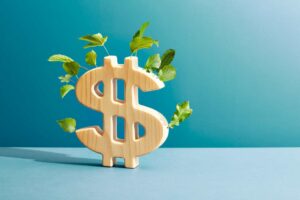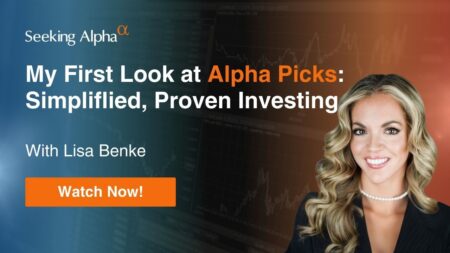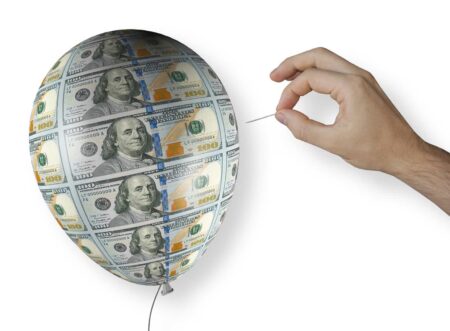Listen below or on the go on Apple Podcasts and Spotify
In Kim’s absence this week, we’re bringing you some conversations from recent Investing Experts podcasts. Today we’re discussing interest rates, high yields, REITs and dividends.
Ryne Williams warns of juicy yield traps and advises looking at dividend history (0:49). How the macro picture affects price movements, especially in REITs (2:15). Dividend Growth Investing, meanwhile, shares why he prefers dividend ETFs like SCHD and DGRO (4:05).
Transcript
Ryne Williams: There’s a type of dividend paying stock that we talk about called yield traps.
And essentially, these yield traps are exactly what they sound like. They’re companies or ETFs that come with high starting yields. Typically, it’s 11%, 12%, 15%, sometimes even higher percentages, but very juicy and very tempting dividend yields, but you got to look beyond just the dividend yield. And that’s where you got to look at the dividend history.
And so, these yield traps, while they may have these high starting yields, and I’ll give you some concrete examples in a moment, if you look at the dividend history on these companies or ETFs, the dividend per share is going down over time.
If you hop on Seeking Alpha, just search (AGNC) or search (ORC), that’s Orchid Island Capital or AGNC Investment Corp, look at the dividend history on those and you’ll know what I’m talking about.
Over time, if you look at the last 10 years, the dividend per share is, I think in both of their cases has been cut in more than half. So yeah, you might have a high starting yield and 10 years ago you might have had a high starting yield, but over time your cash flow returns with those companies are going down.
And those are the exact opposite types of things that you want to invest in. You want to see that going up over time. So no matter how high the yield is, you got to look out for those yield traps.
But also, just dividend aside, as it pertains to investing in individual companies, look out for ones that are also showing some negative sales growth, negative earnings growth. And if you’re noticing trends there, that can be a red flag as well. So, you got to look out for those things too.
RS: Something that people have been talking about and investors have been noting is that in this environment that we’re in, given where interest rates are thought to be going, given where the Fed is looking to go, that dividend paying stocks will be doing better in this environment.
Does macro affect your investing style or strategy or companies that you’re looking at, at all?
RW: I would say not from a long-term perspective, but if those things can impact price movements in the short-term, which I think they can, and we’ve seen that, especially with REITs this year, I do think that’s worth taking into consideration, especially if you’re waiting for the right time to buy a certain company.
They say don’t time the market or whatever, but when it comes to buying individual stocks, timing is a factor that – you want to get the timing right. You want to get that margin of safety.
So, if looking at the macro environment tells you that a stock could potentially be heading in a certain direction or if interest rate changes could be having a short-term impact, then I do think that’s worth taking into consideration, and you can try and base your next move around what you think is going to happen there.
RS: What else would you say to investors either that are already invested in dividend stocks or what would you encourage investors to think about that may be getting started in that case? I guess for the novices and the more experienced among us.
RW: I think it just goes back to the whole yield trap thing. Don’t buy a stock just because it has a certain dividend yield. You really have to look at the big picture. You really have to look at things holistically.
And some people don’t want to do that. Some people don’t want to spend the time looking into the financial statements or reading the annual reports or listening to their earnings calls or anything like that.
And I also think as a new investor, that’s something that you should come to understand about yourself as fast as you can because if you don’t want to do those things, then just stick with ETFs. And I think that’s a great way to go as well. You just really have to know that about yourself as an investor.
Dividend Growth Investing: A lot of people who are newer dividend investors, they go online and they see, okay, there’s a lot of hype around this ETF or that ETF, but they have no clue what the ETF is actually designed to do, right? They have no idea how it’s structured.
And so I would encourage anyone listening who’s truly serious about dividend investing and looking into ETFs is truly understand how these ETFs are structured, understand the fund methodology, how they’re screening companies for dividend growth, the different metrics that they’re looking at, because they’re not all created equal.
Some of my favorite ETFs that I like, I really like (SCHD). There’s a lot of hype around SCHD and it’s well deserved because SCHD is the Schwab Equity ETF. It tracks the Dow Jones 100 Index, here in the U.S.
And it’s a unicorn because it has a high, relative to the market, a high starting forward yield of about 3.5%. And it’s a unicorn because it’s grown that dividend by around 10% annually since its inception, okay, the last about 10 years. And so it truly is a unicorn.
However, one drawback to SCHD is you’re only getting very limited exposure to the overall market. There’s about 7% overlap with the total U.S. stock market. So there’s very much an active approach to SCHD in the sense of you’re only getting a fraction of exposure to the overall market.
So I like combining SCHD with another ETF, for example, (DGRO). This is from the iShares Dividend Growth ETF. The thing that I like about DGRO is it screens companies that have increased their dividend for at least five years, and look at other qualifying metrics around the quality of the businesses and how they’re growing their dividend.
They exclude REITs on both of these ETFs. So what does that mean? It means that the income is 100% qualified. You’re getting the very best tax rate on the income from these ETFs. So if you’re working a day job, you’re getting a W-2, you’re paying regular income tax on that income that you’re generating from active income.
When you invest in these ETFs, you’re getting the lowest tax rates that we have here in the United States. Every country is going to be a little bit different, but here in the U.S. you’re getting much favorable rates on your taxes.
And so understanding what you’re truly getting, understanding the expense ratio and all of that is so, so important.
RS: Anything else that you would point to in terms of investors needing to stay away from in terms of metrics or types of dividend paying stocks or specific dividend paying stocks that you would stay away from?
DGI: I would categorize it this way. If you’re new to investing, right, and you’re a little bit more inexperienced, you’re trying to figure things out. Don’t take – don’t try to go for that Hail Mary, right? Don’t think that you’re going to pick the stock right before it turns around, okay?
Don’t buy the Walgreens (WBA) before they cut their dividend thinking that it’s going to have a quick turnaround.
Read the full article here













